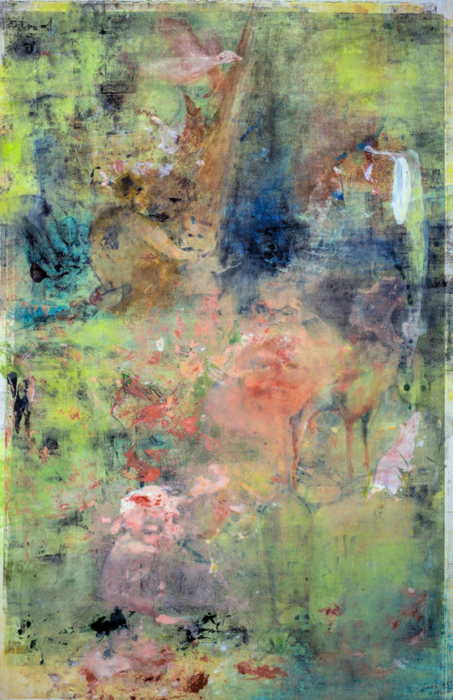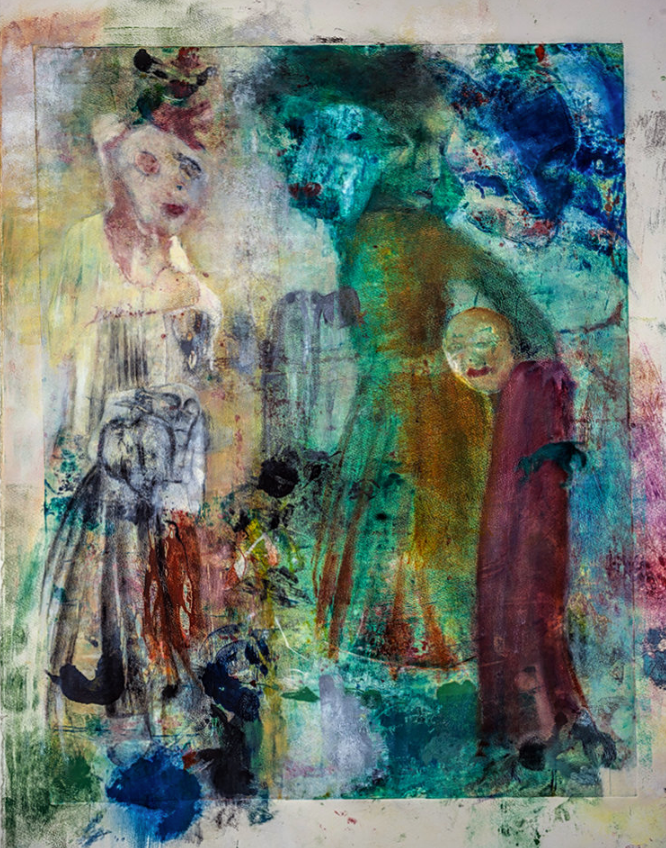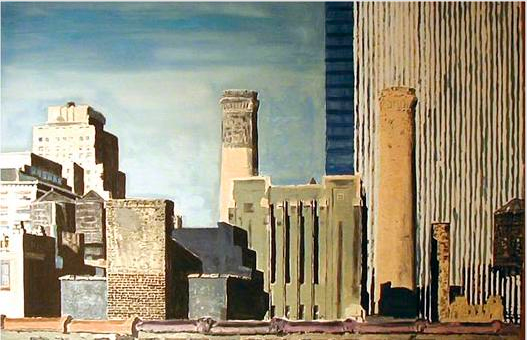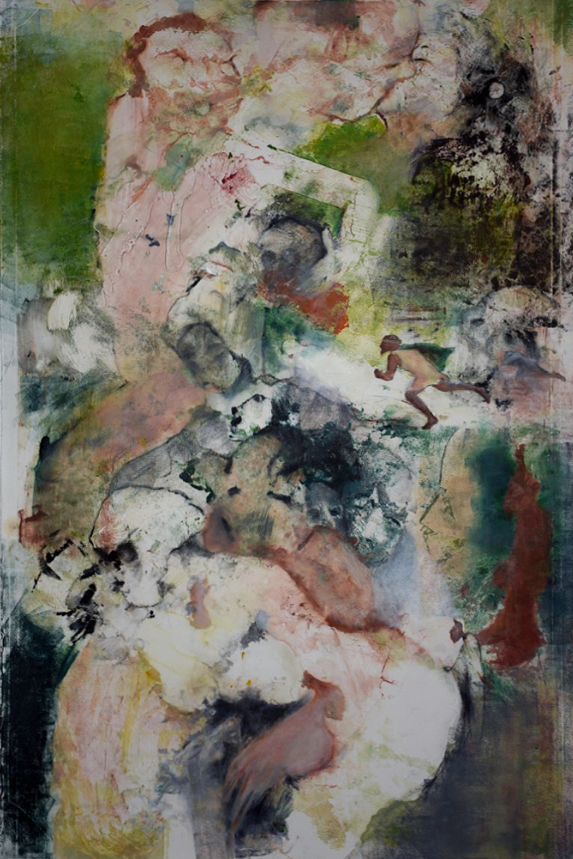People
artnet Asks: Artist Sabina Klein on Compassion, Color, and Continuous Learning
The artist’s first solo exhibit in nearly a decade, “Sabina Klein: On Reflection,” is on view through October 21 at Long-Sharp Gallery and John Szoke Gallery.

The artist’s first solo exhibit in nearly a decade, “Sabina Klein: On Reflection,” is on view through October 21 at Long-Sharp Gallery and John Szoke Gallery.

Artnet Galleries Team

Printmaker and painter Sabina Klein prioritizes abstraction with a whisper of the figural in her newest textural, evocative works. The artist’s attention to surface, depth, emotion, and the interplay among these elements, form sensitively intelligent paintings. “Sabina Klein: On Reflection,” at Long-Sharp Gallery, showcases these newer works by the artist, while John Szoke Gallery presents Klein’s earlier graphic, representational etchings and drawings. Her interest in primary and muted color relationships, and the atmospheric quality that characterizes her work is evident throughout the two-space exhibition, which you can see through October 21.
Here, Klein discusses her acuity of the medium, making it work as an artist, and what she wishes she had learned in school.
Tell us about your current show at Long-Sharp Gallery and John Szoke Gallery.
The exhibit consists of paintings on paper. I love painting on paper. I believe because I am a printmaker, I can see the different qualities of how paint, ink, watercolor, pencils, pastels, look on different papers. That is the essence of the technical aspect of the works now on exhibit. Let’s say each paper has an essential identifying nature and I love to bring it out.
One of the things my work is about is seeing, just looking. Obviously the paintings have a deep connection to me and I hope I’m able to convey these feelings to other people. The paintings are about the feelings that we as humans experience, emotional states and reactions that we all share from tenderness and warmth, to compassion and empathy, to suspicions and fears, to hurts and pains. I hope my work is able to touch something particular in another human being.
Why did you decide to open up your own printmaking studio? How do you balance that with your artistic career?
I opened the studio because I needed to earn a living. I printed for other artists during the day and did my own work at night. It was long hours, but when you are young you don’t have a problem doing it. After a while, you do have to make a decision and chose one over the other. I am happy I opened the studio. I was able to make a living, expand my technical proficiency, and work with many artists that today are household names. Printing taught me how to be meticulous.

Sabina Klein, Woman in White (2016). Courtesy of Long-Sharp Gallery.
Have you experimented with other media?
I’ve experimented with a lot of media. I quickly dispatched with some—like sculpting—in my college days. Today I work in multiple media but I prefer to work on paper. What I can get on paper I cannot attain on canvas. I make etchings, monotypes, watercolors, drawings, collages. Although I consider myself quite proficient in etching, I still regularly experiment with this medium.
What do you like to do when you’re not in the studio?
Is looking at art a bad answer? I love to go to museums. I like to go to lunch with friends, go to movies with my husband, listen to music. Just usual things.
Who are some of your biggest influences?
Growing up, I became conscious of and loved Caravaggio, Michelangelo, da Vinci, and Louise Nevelson. At one point in my teenage years, I realized I could count the number of women artists on one hand and have fingers left over so I became more interested in finding more women artists. The list grew but I was absolutely amazed to realize that “anonymous” was a woman and there were a lot of them, of us, in history relegated to the sidelines.
I was fortunate to work with Louise Nevelson. She was such a personality. She was always searching, like everyone is, I suspect. She strove and questioned every aspect of her work. She made difficult choices and stuck with them. This was in the 1980s. We worked together on larger scale etchings. Maybe 36 inches, maybe 40 inches. I was and still am to an extent starry-eyed when I think of those days. Working with her toward the end of her life gave me great insight. I am older now and understand more of her experiences. I draw on those days and that experience a lot these days.

Sabina Klein, Chelsea Morning (1999). Courtesy of John Szoke Gallery.
Do you have any favorite artists?
I actually like all sorts of art, realism or abstract. I gravitate towards art that is technically strong, no matter the subject matter or the artist or the medium.
You’ve taught at Parson’s School of Art and Design and the New School for Social Research. What kind of teacher would you say you are? And what kind of student were you?
There is a big gap between creating a project and having the technical proficiency to bring that project to fruition. I focused on teaching students how to bridge this gap. My goal was to teach the skills enabling my students to translate their ideas onto a surface, normally that was an etching plate. This is neither easy nor simple and although my skills are strong in this regard, I hone them daily. I wish I would have had more of this type of education when I was at school. That is why I was so set on my students having this experience. I was a sponge in school. I studied hard. I took it seriously. I am still that student.
Do you ever get artist’s block? What do you do to overcome it?
I’ve had it. I don’t worry about it. It passes, at least it has so far. I can’t force something to come if it isn’t ready. Sometimes I try. I put information, colors, forms, or something on a plate [for etching]. I wait for something to connect.

Sabina Klein, The Runner (2014). Courtesy of Long-Sharp Gallery.
If you weren’t an artist, what other profession would you have gone into?
A doctor probably. Or maybe a musician. I love music. If I had to do it all over again, I can’t even imagine. I would have to be reborn several lifetimes to become all the things that life has to offer with the range of possibilities that could be selected.
What has been the highlight of your career or personal life so far?
That’s tough. I’m not so young. I’ve experienced ups and downs. I have been touched and affected by so much; my thoughts about life have changed quite a bit over the years. A highlight for me today is that I am still able to live the dream that I had as a child: I am an artist.
The artnet Gallery Network is a community of the world’s leading galleries offering artworks by today’s most collected artists. Learn more about becoming a member here, or explore our member galleries here.